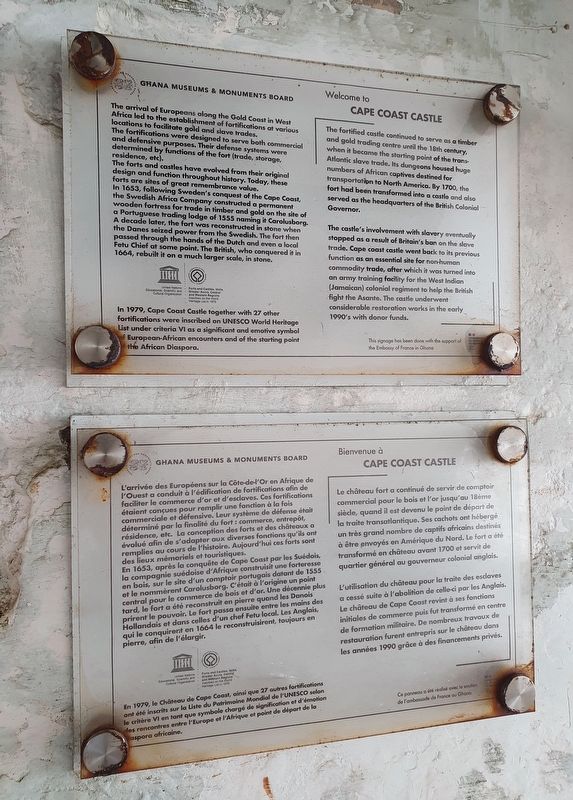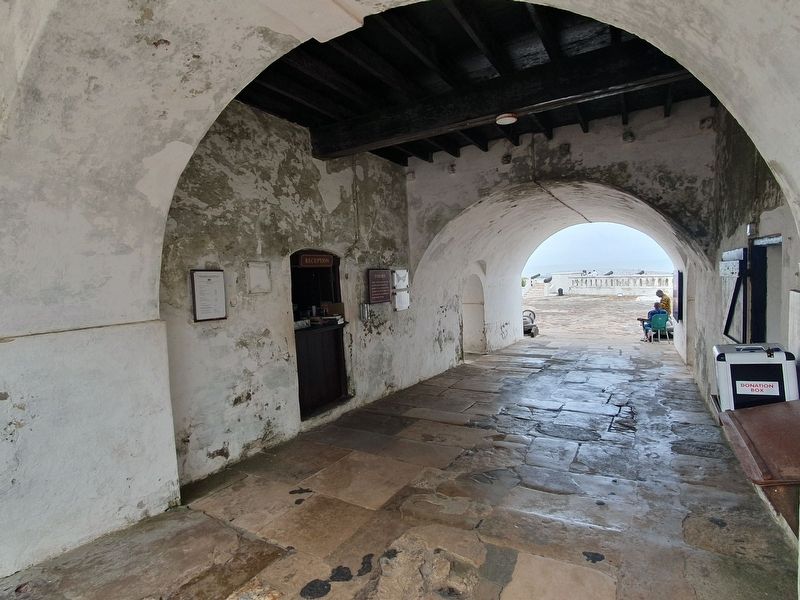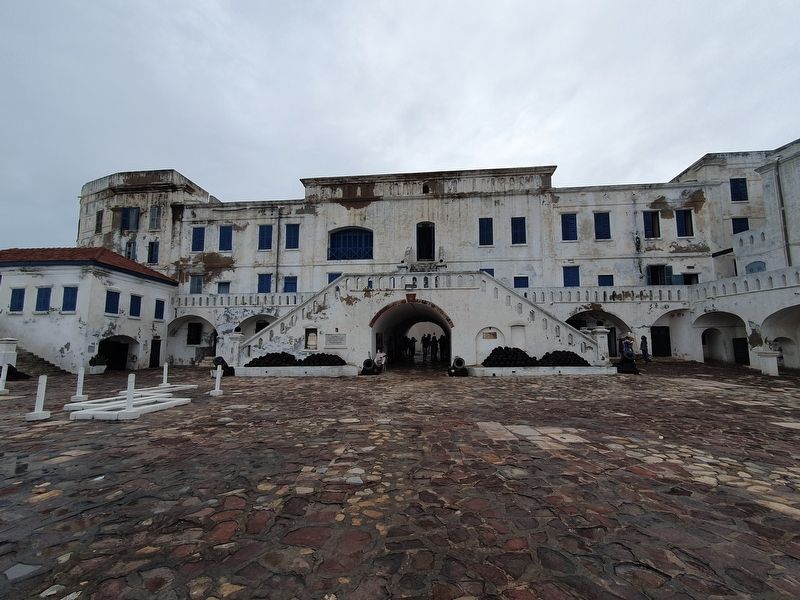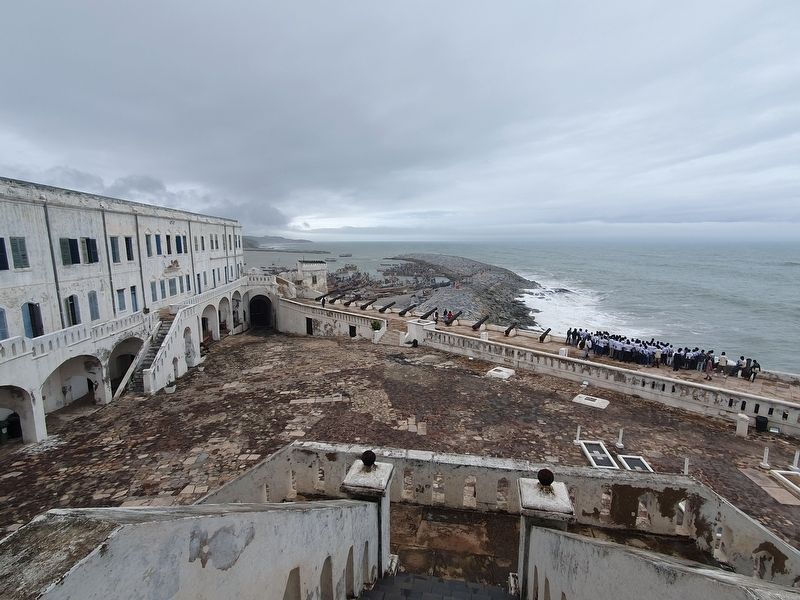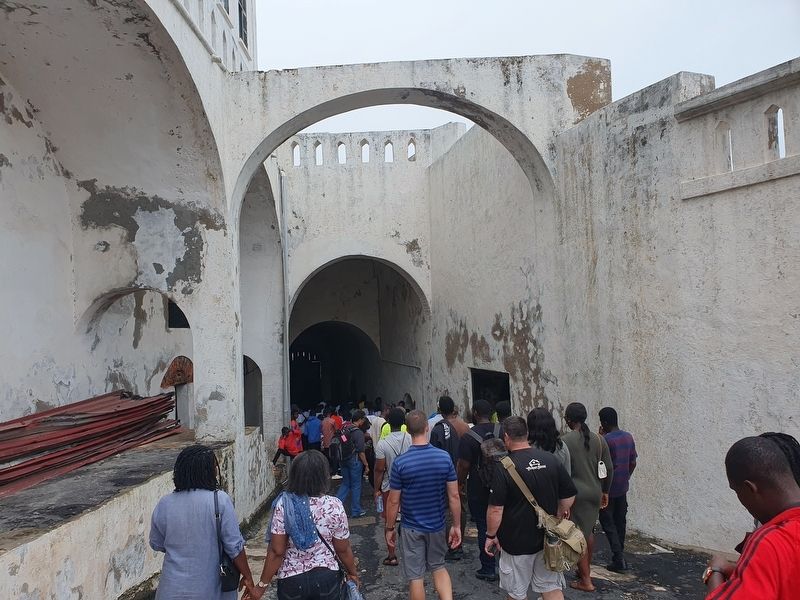Cape Coast in Cape Coast Metropolitan District, Central Region, Ghana — West Africa
Cape Coast Castle
The arrival of Europeans along the Gold Coast in West Africa led to the establishment of fortifications at various locations to facilitate gold and slave trades. The fortifications were designed to serve both commercial and defensive purposes. Their defense systems were determined by functions of the fort (trade, storage, residence, etc.). The forts and castles have evolved from their original design and function throughout history. Today, these forts are sites of great remembrance value.
In 1653, following Sweden’s conquest of the Cape Coast, the Swedish Africa Company constructed a permanent wooden fortress for trade in timber and gold on the site of a Portuguese trading lodge of 1555 naming it Carolusborg. A decade later, the fort was reconstructed in stone when the Danes seized power from the Swedish. The fort then passed through the hands of the Dutch and even a local Fetu Chief at some point. The British, who conquered it in 1664, rebuilt it on a much larger scale, in stone.
In 1979, Cape Coast Castle together with 27 other fortifications were inscribed on the UNESCO World Heritage List under criteria VI as a significant and emotive symbol of European-African encounters and of the starting point of the African Diaspora.
Welcome to Cape Coast Castle
The fortified castle continued to serve as a timber and gold trading centre until the 18th century, when it became the starting point of the trans-Atlantic slave trade. Its dungeons housed huge numbers of African captives destined for transportation to North America. By 1700, the fort had been transformed into a castle and also served as the headquarters of the British Colonial Governor.
The castle’s involvement with slavery eventually stopped as a result of Britain’s ban on the slave trade. Cape Coast castle went back to its previous function as an essential site for non-human commodity trade, after which it was turned into an army training facility for the West Indian (Jamaican) colonial regiment to help the British fight the Asante. The castle underwent considerable restoration work in the early 1990’s with donor funds
This signage has been done with the support of the Embassy of France in Ghana.
Francais
à la fois commerciale et défensive. Leur système de défense était déterminé par la finalité du fort: commerce, entrepôt,
résidence, etc. La conception des forts et des châteaux a évolué afin de s'adapter oux diverses fonctions qu'ils ont remplies au cours de l'histoire. Aujourd'hui ces forts sont
des lieux mémoriels et touristiques.
En 1653, après la conquête de Cape Coast par les Suédois, que construiait une forteresse la compagnie suédoise d'Afrique en bois, sur le site d'un comptoir portugais datant de 1555 et le nommérent Carolusborg. C'était à l'origine un point central pour le commerce de bois et d'or. Une décennie plus tard, le fort a été reconstruit en pierre quand les Danois prirent le pouvoir. Le fort passa ensuite entre les mains des Hollandais et dans celles d'un chef Fetu local. Les Anglais, qui le conquirent en 1664 le reconstruisirent, toujours en pierre, afin de l'élargir.
En 1979, le Château de Cope Coast, ainsi que 27 outres fortifications ont été inscrits sur la liste du Patrimoine Mondial de l'UNESCO le critère VI en tant que symbole chargé de signification et d'émotion fes rencontres entre l'Europe et l'Afrique et point de départ de la pora africaine.
Bienvenue à Cape Coast Castle
Le château fort a continué de servir de comptoir commercial pour le bois et l'or jusqu'au 18ème siècle, quand il est devenu le point
de départ de la traite transatlantique. Ses cachots ont hébergé un très grand nombre de captifs africains destinés à être envoyés en Amérique du Nord. Le fort a été transformé en château avant 1700 et servit de quartier général au gouverneur colonial anglais.
L'utilisation du château pour la traite des esclaves a cessé suite à l'abolition de celle-ci par les Anglais. Le château de Cape Coast revint à ses fonctions initiales de commerce puis fut transformé en centre de formation militaire. De nombreux travaux de restauration furent entrepris sur le chateau dans les années 1990 grâce à des financements privés.
C'est panneau a été realisé avec le soutien de la ambassade de France au Ghana
Erected by Embassy of France in Ghana.
Topics and series. This historical marker is listed in these topic lists: Abolition & Underground RR • Colonial Era • Forts and Castles. In addition, it is included in the UNESCO World Heritage Sites series list. A significant historical year for this entry is 1653.
Location. 5° 6.213′ N, 1° 14.464′ W. Marker is in Cape Coast, Central Region, in Cape Coast Metropolitan District. Marker can be reached from Victoria Road, on the right when traveling east. The marker is on the site of Cape Coast Castle. Touch for map. Marker is at or near this postal address: Victoria Rd 15, Cape Coast, Central Region, Ghana. Touch for directions.
Other nearby markers.
At least 8 other markers are within walking distance of this marker. President Obama in Ghana (a few steps from this marker); John Swanzy (a few steps from this marker); Royal West African Frontier Force Memorial (about 90 meters away, measured in a direct line); The Methodist Church in Ghana / Rev. Joseph Rhodes Dunwell (approx. 0.3 kilometers away); Rev. Thomas Birch Freeman (approx. 0.3 kilometers away); Captain James Potter (approx. 0.3 kilometers away); William Degraft (approx. 0.3 kilometers away); Sir James Marshall (approx. 0.6 kilometers away). Touch for a list and map of all markers in Cape Coast.
Credits. This page was last revised on August 24, 2023. It was originally submitted on August 24, 2023, by J. Makali Bruton of Accra, Ghana. This page has been viewed 69 times since then and 23 times this year. Photos: 1, 2, 3, 4, 5. submitted on August 24, 2023, by J. Makali Bruton of Accra, Ghana.
